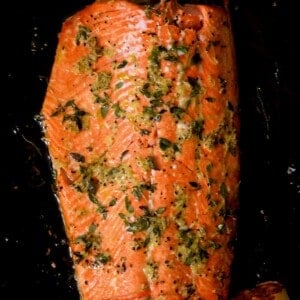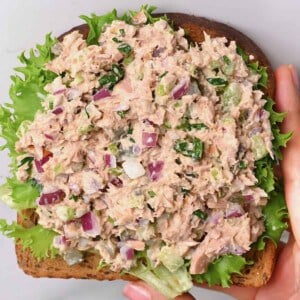If you’re looking for a dish that’s sophisticated enough for a dinner party, impressive enough for date night, and super quick and simple to prepare, this quick pan seared Chilean sea bass recipe is a must-try. It’s so tender, juicy, and flavorful that it practically melts in the mouth. Plus, you can have it from the kitchen to the table in just 15 minutes, and there’s minimal prep or clean-up, making this the best seared Chilean sea bass ever.
Watch the video tutorial
What is Chilean sea bass?
Chilean sea bass is a deep sub-Antarctic cold water species of fish found in the Pacific, southern Atlantic, and Indian oceans. It’s also known as Patagonian toothfish, mero, or icefish. It’s high in protein and low in carbs, and it’s famously known for its rich yet delicate, almost buttery flavor (not overly fishy!) and tender, flaky texture. Often likened to black cod but even softer and slightly sweeter, it’s considered a premium-quality fish, fairly hard to overcook, and very versatile, perfect for enjoying with all sorts of seasonings, sauces, and sides.
How to cook Chilean sea bass
First, pat the sea bass fillets dry with paper towels to remove moisture. Then, generously sprinkle salt and black pepper on both sides of the fillets. Next, heat the butter and oil in a large skillet/frying pan (or well-seasoned cast iron skillet) over medium-high heat. Once hot, add the fillets skin-side-down and pan-sear for 3-4 minutes per side (depending on the thickness). For very thick fillets over an inch, it can take 5 minutes per side. Note that if it sticks when you try to flip the fillet, it’s not ready. Leave it for a further 10-15 seconds and try again. To ensure the Chilean sea bass fillets are properly cooked, use a thermometer to check that the internal temperature is 140-145ºF/60-63ºC. Alternatively, use a fork to see if it flakes easily. Meanwhile, while the fish cooks (or beforehand), prepare the simple lemon sauce by melting the butter in a small saucepan over medium heat until lightly browned. Then mix in the lemon juice, salt, and pepper. When everything is ready, spoon the lemon butter sauce over the pan seared sea bass, and enjoy!
How to serve
To make this dish complete, pair it with some great sides. You can pick a fresh, flavorful salad or a simple, classic side dish. Either way, it’ll taste amazing! Here are some of the best dishes to serve with pan seared Chilean sea bass:
Potatoes: Creamy mashed potatoes or roasted potatoes are comforting and satisfying. Salads: This simple arugula salad or tabbouleh will add a refreshing, crisp contrast to the rich sea bass. Grains: Quinoa and cilantro lime rice add a light, nutty flavor that goes perfectly with the fish. Cooked Vegetables: Sautéed spinach, asparagus, green beans, and roasted Brussels sprouts bring vibrant, fresh flavors and textures.
Top tips for the perfect Chilean sea bass
Choose the right Chilean sea bass: Opt for fresh and skin-on fillets of similar size to ensure even cooking. When pan seared, the skin turns wonderfully crispy and delicious. If you prefer not to eat the skin, that’s fine—just remove it after cooking. The skin helps keep the fish moist, juicy, and firm during cooking. Dry and season the fish: Pat the sea bass dry with paper towels to remove excess moisture, then generously season with salt and pepper. Add other spices or herbs to suit your taste. Preheat the pan: Make sure the pan is hot before adding the fish. A hot pan locks in flavors and creates a crispy exterior. Don’t move the fish too soon: Let it sear without moving it for a few minutes to form a crispy crust. It’s ready to flip when it releases easily from the pan. Pan-sear skin side down first: Start with the skin side down. Use a meat thermometer to check the internal temperature. The fish is done when it flakes easily with a fork and reaches an internal temperature of about 140-145ºF (60-63ºC). Finish with lemon butter sauce: Spoon lemon butter sauce over the seared sea bass for extra flavor.
If you try this easy pan-seared Chilean sea bass recipe, let me know how it goes in the comments below. I’d appreciate a recipe card rating and would love to see your recipe recreations—tag me on Instagram @Alphafoodie!











